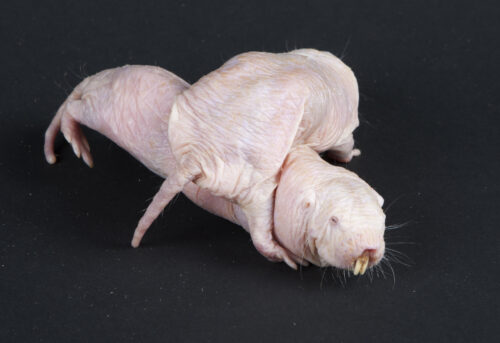For millennia, the pursuit of eternal youth and immortality has been the quest of adventurers and scientists alike, whether through the search for the fabled fountain of youth or the elusive recipe for the elixir of life. Unfortunately, these efforts have had limited success. Instead, as mutations accumulate within DNA over time, we are condemned to the inevitable reality of aging and the increased risk of death and maladies.
Not for the naked mole rat, though. In the burrows of East Africa, these pink and wrinkled rodents (nicknamed NMRs) thrive within eusocial colonies of workers and queens, outliving their life expectancy based on body mass by over five times. Demographically, the NMR is non-aging, meaning that its risk of dying doesn’t increase as it ages, and cancer is a rare occurrence in the species.
Quantifying aging in mammals has been explored via epigenetic clocks, which measure DNA methylation in CpG sites, regions where methylation is most common, as a marker for epigenetic age. In a Nature Communications paper published earlier this year, researchers in Vadim Gladyshev’s lab at the Harvard Medical School analyzed three million common CpG sites in 107 NMRs to investigate if and how the NMR ages epigenetically.
The sequencing libraries used to analyze CpG sites were designed by Yale researcher Margarita Meer, who first studied NMRs in Gladyshev’s lab and began developing the NMR epigenetic clock. “We weren’t sure whether it’d be possible to see the same kind of epigenetic aging [in NMRs] that we see in other mammals. Now we and two independent research groups led by Steve Horvath and Robert Lowe showed that yes, you can construct this epigenetic clock,” Meer said.
Csaba Kerepesi, a PhD research fellow at the Institute for Computer Science and Control, completed the project. Kerepesi found a gradual age-related increase in DNA methylation entropy, i.e., randomness, and the NMR clock correlated well with chronological age, revealing evidence of epigenetic aging in NMRs. The clock also showed decelerated aging in older queens, a finding consistent with analyses by array-based DNA methylation clocks.
Analysis of the twenty-six CpG clock sites found that genes associated with these sites are linked to aging, such as the aging gene Tert and the DNA repair gene Prpf19, a possible explanation for NMRs’ resistance to disease and aging. For Kerepesi, making discoveries from a gene-level analysis was extremely rewarding. “I felt very special that I could see this special animal’s epigenome. So what’s in that? What’s the secret of the long life of this animal, and possible non-aging?” Kerepesi said.
With current research focusing on rejuvenating cells and reversing epigenetic age with stem cells, understanding the NMR epigenome has immense potential in developing medicine. “We want our cells not just to live but also to be younger, which also includes having younger epigenomes,” Meer said. Kerepesi echoed the far-reaching implications of this work. “If we can learn something from a non-aging animal, maybe we can live longer. If you solve the problem of aging, you can solve and defeat all of the aging-related diseases and even most cancers.”

